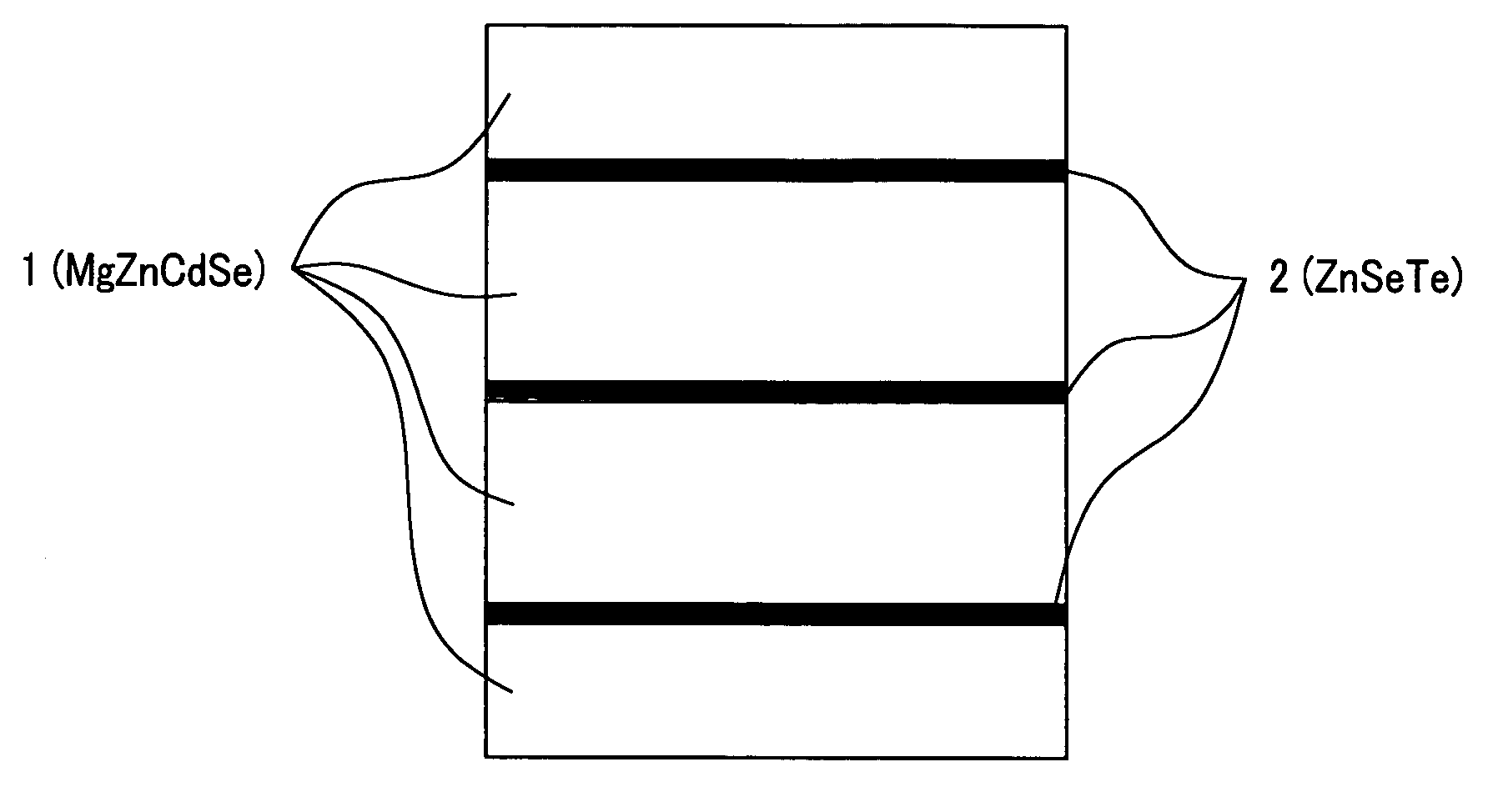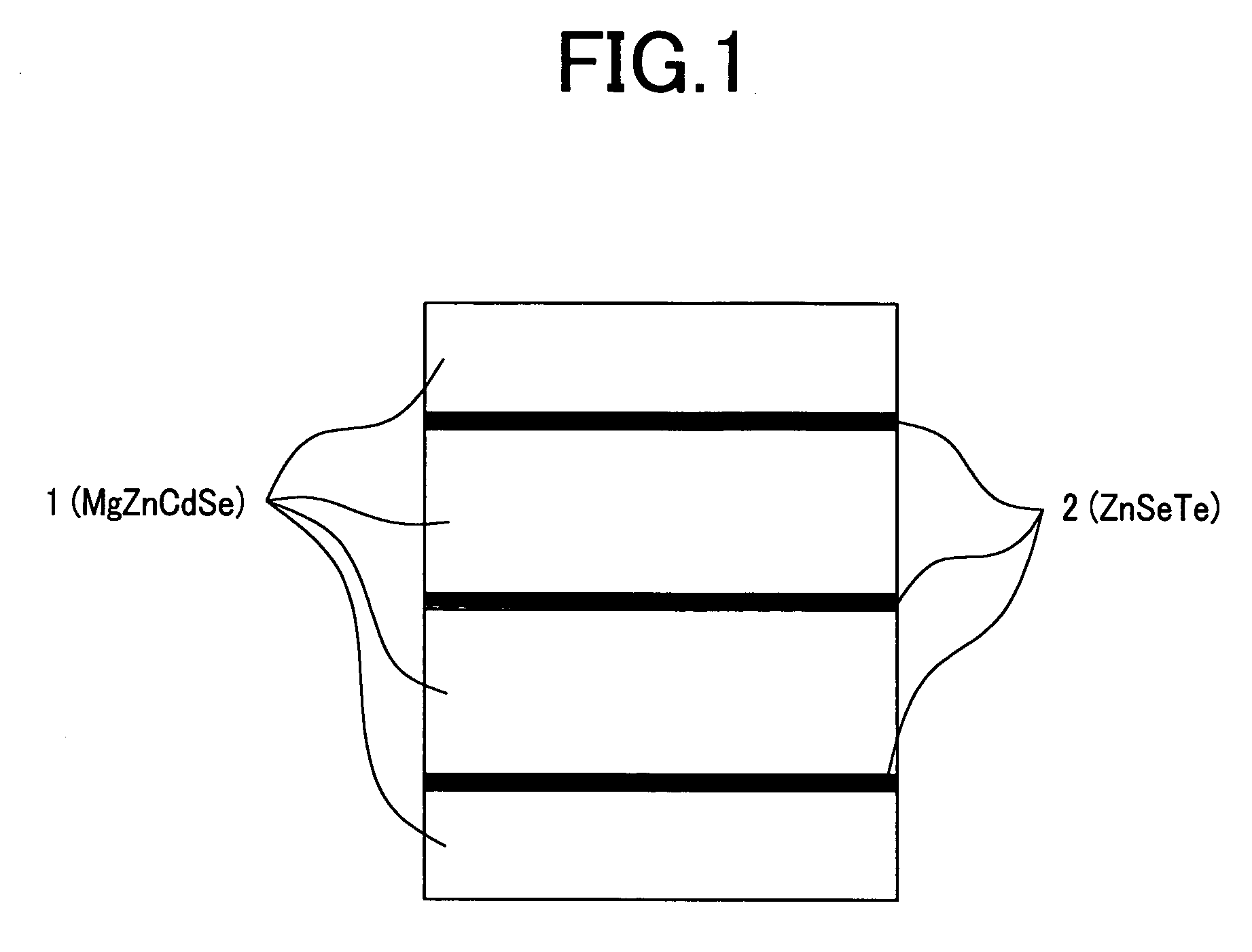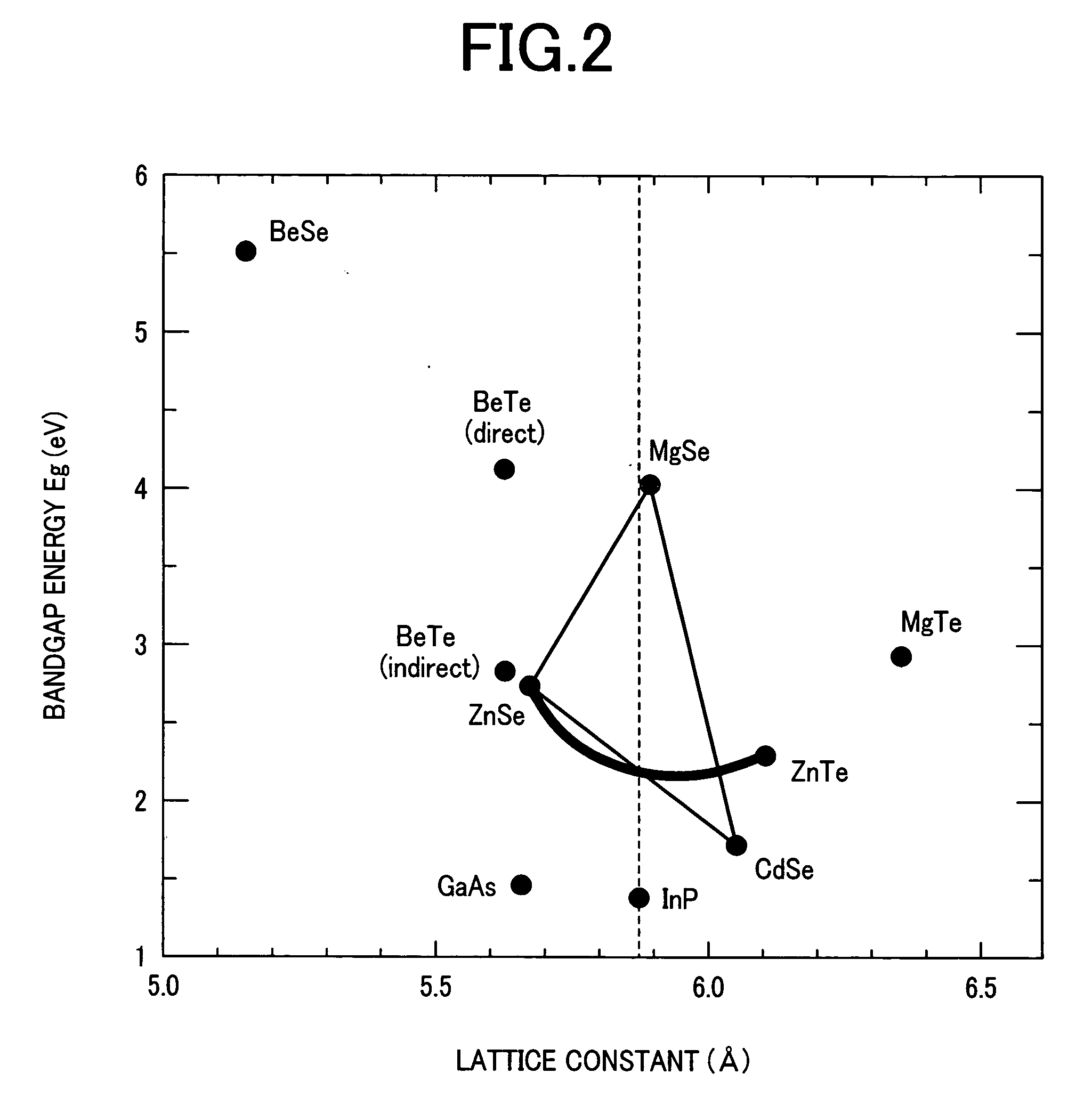Optical semiconductor devices on InP substrate
a technology of optical semiconductors and inp substrates, applied in semiconductor devices, semiconductor lasers, lasers, etc., can solve the problems of insufficient material exploitation, insufficient performance to realize the practical application of the material, and insufficient research and development, so as to achieve the effect of high practicability
- Summary
- Abstract
- Description
- Claims
- Application Information
AI Technical Summary
Benefits of technology
Problems solved by technology
Method used
Image
Examples
first embodiment
[0084] the present invention will be described below. A specimen shown in FIG. 5A was manufactured, and its characteristics were evaluated.
[0085] A crystal of the specimen shown in FIG. 5A was grown by using a 2-growth chamber molecular beam epitaxy (MBE) system. First, an InP substrate 21, after being subjected to the optimal surface treatment, was placed within the MBE system. The InP substrate 21 was then placed in a preparatory chamber for specimen exchange, air therein was vacuumed by a vacuum pump, until a pressure of 10−3 Pa or less was obtained, and the InP substrate 21 was heated up to 100° C. to desorb residual moisture and an impurity gas.
[0086] Next, the InP substrate 21 was conveyed to a III-V dedicated growth chamber, and was heated at a substrate temperature of 500° C. while a P molecular beam is applied to the surface of the InP substrate 21, thereby removing an oxide film formed on the surface of the InP substrate 21. After that, an InP buffered layer 22 was grown ...
second embodiment
[0100] the present invention will be described below. Specimens shown in FIGS. 8A and 8B were manufactured, and their characteristics were evaluated.
[0101] The specimen shown in FIG. 8A will now be described. The specimen was manufactured through the crystal growth by using the 2-growth chamber molecular beam epitaxy (MBE) system. An InP substrate 21, after having been subjected to the optimal surface treatment, was placed within the MBE system. The InP substrate 21 was then placed in a preparatory chamber for specimen exchange, air therein was vacuumed by a vacuum pump, until a pressure of 10−3 Pa or less was obtained, and the InP substrate 21 was heated up to 100° C. to desorb residual moisture and an impurity gas.
[0102] Next, the Inp substrate 21 was conveyed to a III-V dedicated growth chamber, and was heated at a substrate temperature of 500° C. while a P molecular beam is applied to the surface of the Inp substrate 21, thereby removing an oxide film formed on the surface of t...
third embodiment
[0114] the present invention will now be described. A specimen shown in FIG. 11 was manufactured and its characteristics were evaluated. A crystal of the specimen shown in FIG. 11A was grown by using a 2-growth chamber molecular beam epitaxy (MBE) system. First, an S-doped InP substrate 21, after being subjected to the optimal surface treatment, was placed within the MBE system. The InP substrate 21 was then placed in a preparatory chamber for specimen exchange, air therein was vacuumed by a vacuum pump, until a pressure of 10−3 Pa or less was obtained, and the InP substrate 21 was heated up to 100° C. to desorb residual moisture and an impurity gas.
[0115] Next, the InP substrate 21 was conveyed to a III-V dedicated growth chamber, and heated at a substrate temperature of 500° C. while a P molecular beam is applied to the surface of the InP substrate 21, thereby removing an oxide film formed on the surface of the InP substrate 21. After that, an InP buffered layer 22 was grown to be...
PUM
 Login to View More
Login to View More Abstract
Description
Claims
Application Information
 Login to View More
Login to View More - R&D
- Intellectual Property
- Life Sciences
- Materials
- Tech Scout
- Unparalleled Data Quality
- Higher Quality Content
- 60% Fewer Hallucinations
Browse by: Latest US Patents, China's latest patents, Technical Efficacy Thesaurus, Application Domain, Technology Topic, Popular Technical Reports.
© 2025 PatSnap. All rights reserved.Legal|Privacy policy|Modern Slavery Act Transparency Statement|Sitemap|About US| Contact US: help@patsnap.com



